1. What is ineffective classroom design?
1.1. Basics
1.1.1. Is it comfortable?
1.1.2. can everyone see?
1.1.3. can everyone hear?
1.2. especially in practical spaces - they don't let the technology work
1.3. The space you are in
1.3.1. Is it effective?
1.3.2. Does it get in the way of you learning?
1.3.3. Are you comfortable?
1.3.4. Can you see and hear me clearly?
2. How does classroom design affect student behaviour?
2.1. This is the difference between what a good classroom gives and a poor classroom deprives you of
2.1.1. spaces to be inspired
2.1.2. space that drags you down
2.2. the knowledge that the best teachers can excel and lead their students to the same in the worst classroom
2.2.1. But the effect of poor classroom on every other teacher and their students can be great
3. What inspires my classroom design?
3.1. The importance of the job
3.1.1. Not arogance - but knowing what I do makes a difference
3.2. learners
3.2.1. the students
3.2.1.1. engagement with students
3.2.1.2. participation of students in the process
3.2.2. my experience as a learner
3.2.2.1. dyslexic
3.2.2.1.1. understanding that we a learn in slightly different ways
3.2.2.2. renaissance man!
3.2.2.2.1. Arts
3.2.2.2.2. Science
3.3. teachers
3.3.1. talking to the subject specialists
3.3.1.1. a passion for their subject
3.3.1.2. a passion for teaching and learning
3.3.1.3. an understanding of the specifics of their art
3.3.2. The people I meet are not dull
3.3.2.1. If they are I am most concerned
3.4. The vision and ethos of the institution
3.4.1. inter disciplinary collaboration
3.4.2. student ownership
3.4.3. teacher ownership
3.4.4. community links
3.5. best practice
3.5.1. design
3.5.2. teaching and learning
3.6. An inspiring classroom?
3.6.1. |I have the belief that the best classroom disappears when the best learning takes place
3.6.1.1. some teachers have described to me the moment that something changes in the students - things click into place across the the room
3.6.1.1.1. That ah-ha moment
3.6.1.1.2. The moment that curiosity takes over
3.6.1.1.3. The idea of being in a 'flow '-state - especially when creating
3.6.1.2. the best clssrooms should allow themselves to disappear easily
3.6.2. Inspirational like a good canvas to a painter. or an excellent piece of timber to a sculptor.
4. In an ideal classroom for the arts what do I plan for?
4.1. practical activities
4.1.1. designing
4.1.2. making
4.1.3. performing
4.1.4. the environment for the activity
4.1.4.1. light
4.1.4.2. acoustics
4.1.4.3. space
4.1.5. technology
4.1.5.1. information / teaching technology
4.1.5.2. physical tools
4.1.5.2.1. lathes
4.1.5.2.2. sewing machines
4.1.5.2.3. furniture
4.1.5.2.4. lighting
4.1.6. storage
4.1.6.1. tools
4.1.6.2. materials
4.1.6.3. work
4.2. Display, performance and celebration
4.2.1. student work
4.2.2. exemplars
4.3. colaboration
4.3.1. teacher - student
4.3.1.1. demostration
4.3.1.2. didactic teaching
4.3.2. student - student
4.3.2.1. project work
4.4. comfort
4.4.1. air quality
4.4.2. acoustics
4.4.3. heating and vent
4.4.4. light
4.4.4.1. daylight
4.4.4.1.1. North light
4.4.4.1.2. uniformity of light
4.4.4.2. Views
4.4.4.3. artificial light
5. How do my designs reflect arts pedagogy?
5.1. practice and practise
5.1.1. learning by doing
5.1.2. people who do
5.1.3. A place to do your art
5.2. colaboration
5.3. demonstration
5.3.1. by formal teacher
5.3.2. by practitioner of the arts
5.3.2.1. actor
5.3.2.2. artist
5.3.2.3. designer
5.4. a demonstration - of design?
5.4.1. art to engineering
5.4.1.1. fine art
5.4.1.1.1. Drama
5.4.1.1.2. Music
5.4.1.1.3. poetry
5.4.1.1.4. painting
5.4.1.1.5. sculpture
5.4.1.1.6. installation art
5.4.1.2. applied art
5.4.1.2.1. graphics
5.4.1.2.2. illustration
5.4.1.2.3. advertising
5.4.1.2.4. architecture
5.4.1.2.5. landscape / gardening
5.4.1.2.6. pottery
5.4.1.3. engineering
5.4.1.3.1. coding
5.4.1.3.2. industrial design
5.4.1.3.3. mechanical, electrical , structural engineering
5.4.2. working on 4 levels
5.4.2.1. physical
5.4.2.2. emotional
5.4.2.3. intelectual
5.4.2.4. spiritual

